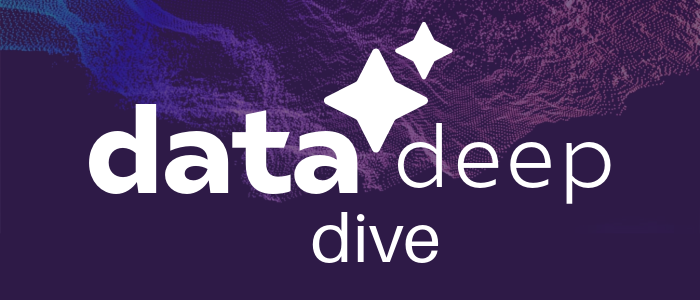In the vast expanse of the information age, data serves as the lifeblood coursing through the veins of decision-making. Much like a seasoned fisherman casting a net into a seemingly endless ocean, the quest for external data is akin to exploring uncharted waters teeming with undiscovered treasures. It allows us to peer into the depths of knowledge, illuminating the murky waters of ambiguity with clarity and insight. But what truly constitutes external data, and how can we effectively harness its potential? Let’s embark on this data deep dive together.
External data can be defined as any information that originates from sources outside of an organization or entity. Think of it as atmospheric conditions that influence the temperature of a bustling metropolitan city; they are integral elements shaping structures from the ground up. Similarly, external data drives the strategic decisions of businesses and institutions alike, enhancing their understanding of market trends, customer behaviors, and industry dynamics. The beauty of external data lies not only in its availability but also in its capacity to enrich and deepen the narratives we construct around our internal datasets.
To illustrate the captivating nature of external data, consider a travel agency seeking to expand its offerings. This agency isn’t merely interested in booking flights and hotel rooms; it wishes to delve into the cultural and social nuances of its target destinations. This is where external data becomes invaluable. By tapping into tourism reports, social media trends, and regional economic indicators, the agency can craft customized experiences that resonate with travelers’ aspirations. Here, external data is not just supplementary; it becomes the canvas upon which imaginative, tailored travel packages are painted.
As fascinating as the concept may be, let’s dissect the components that can be classified as external data. External data is typically categorized into three main types: public and open data, commercial data, and social data. Each category carries its own unique characteristics and implications.
Public data is akin to an open book, available for anyone to read. This can include government publications, demographic statistics, and educational resources. For example, census data provides compiled statistics about the population’s size and distribution, socioeconomic factors, and various demographic characteristics that can profoundly influence business strategies and policy-making. It serves as a foundational element, comparable to the bedrock upon which a skyscraper is built; it supports the structure while providing critical insight into the broader landscape.
Commercial data, on the other hand, resembles proprietary treasures guarded by their owners. This includes information obtained from third-party vendors, market research reports, and commercial data aggregators. Such data becomes a powerful asset when used strategically. By utilizing comprehensive datasets from industry-specific surveys or purchasing consumer behavior reports, a retail giant can unearth invaluable insights about buying patterns, helping to shape its product lines and marketing strategies. Here, external data is akin to a compass, guiding businesses through the intricate terrain of consumer need and preference.
Lastly, we have social data, a rich tapestry woven from the myriad threads of human interaction across digital platforms. This type of data emerges from social media interactions, online reviews, and customer feedback forums. An example could be a clothing brand tapping into social media sentiment analysis to gauge public opinion on a new line of apparel. By analyzing likes, shares, and comments, the brand can succinctly discern whether its efforts have struck a chord with the audience or whether adjustments are necessary. In this instance, external data crystallizes public sentiment, offering a mirror reflecting the collective mood of the consumer base.
However, the steps taken to integrate external data into an organization’s operations are as crucial as the data itself. An adept organization not only seeks out data but also curates and analyzes it with dexterity. Imagine an artist meticulously selecting the colors, textures, and techniques that will breathe life into a canvas. Similarly, businesses need to sift through the cacophony of data, employing data wrangling techniques to cleanse and manipulate it for meaningful analysis.
The intricacies involved in transforming raw data into actionable insights are substantial. Data visualization becomes a key aspect as well; through the artful presentation of complex findings—much like a painter displaying a masterpiece—organizations can communicate narratives that resonate with stakeholders. Visual representations such as charts, graphs, and dashboards can transform vacuous numbers into compelling stories that prompt decision-making.
In the ever-evolving landscape of external data, ethical considerations also come to the fore. With the power of data comes the responsibility to navigate privacy concerns and ensure compliance with regulations. The fine line between gathering actionable insights and infringing on personal privacy is one that organizations must tread with caution. Hence, being proficient in external data means not only leveraging it effectively but also practicing prudence and integrity.
A journey through the realm of external data reveals a world rich in opportunities and challenges. It empowers organizations to displace uncertainty with insights, ignite innovation, and foster informed decision-making. As we cast our nets into this vast ocean of knowledge, we uncover the pearls that lie beneath the surface—each piece of data a vital component of understanding the complex tableau of our evolving environment.
Ultimately, external data is more than just numbers and statistics; it is a narrative waiting to unfold. It invites businesses and individuals alike to dive deep, explore the unseen, and emerge with valuable insights that can shape the future. In this era defined by data, the ability to adeptly navigate the waters of external information is not just a competitive advantage—it is a quintessential skill for success.
